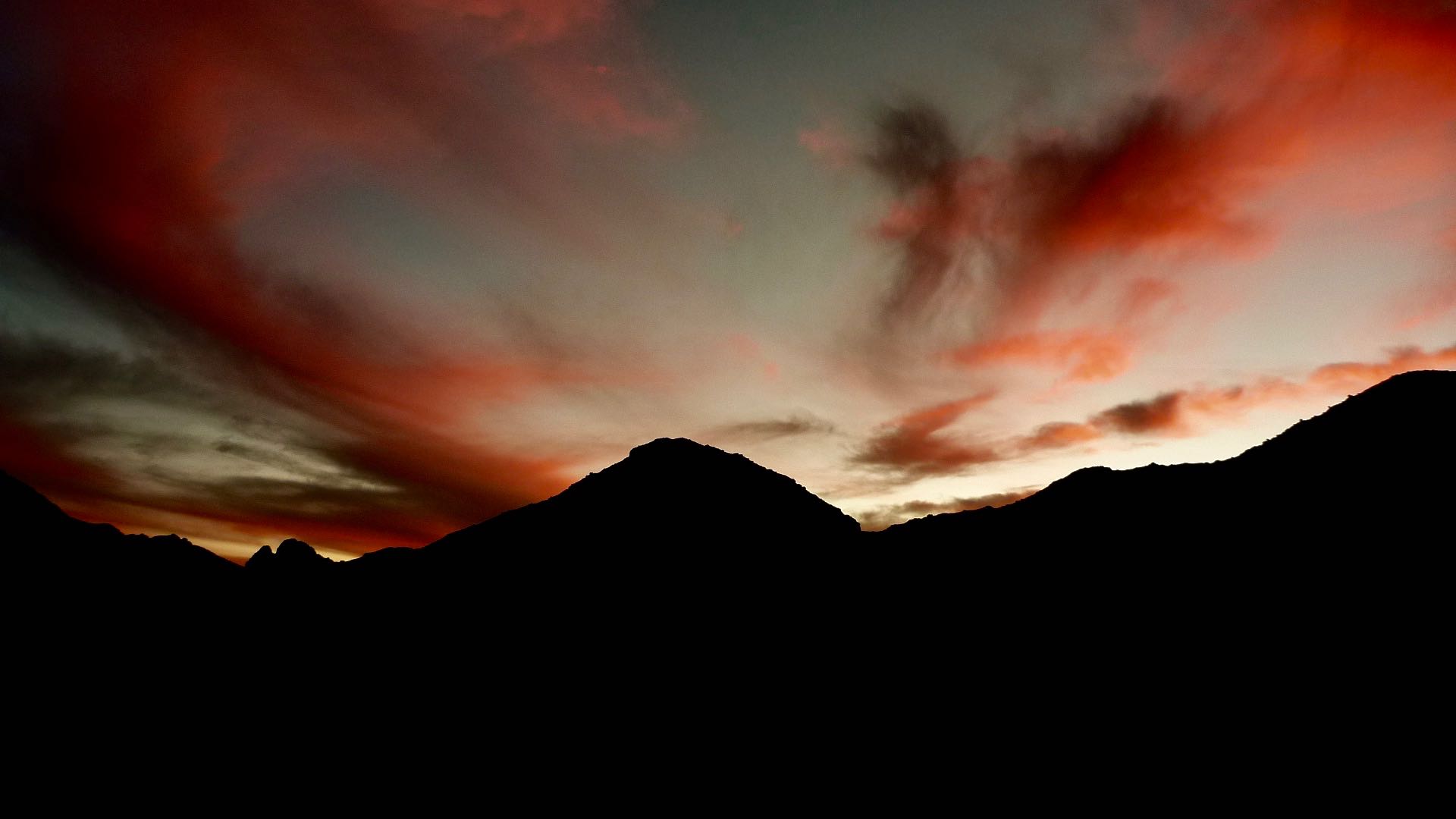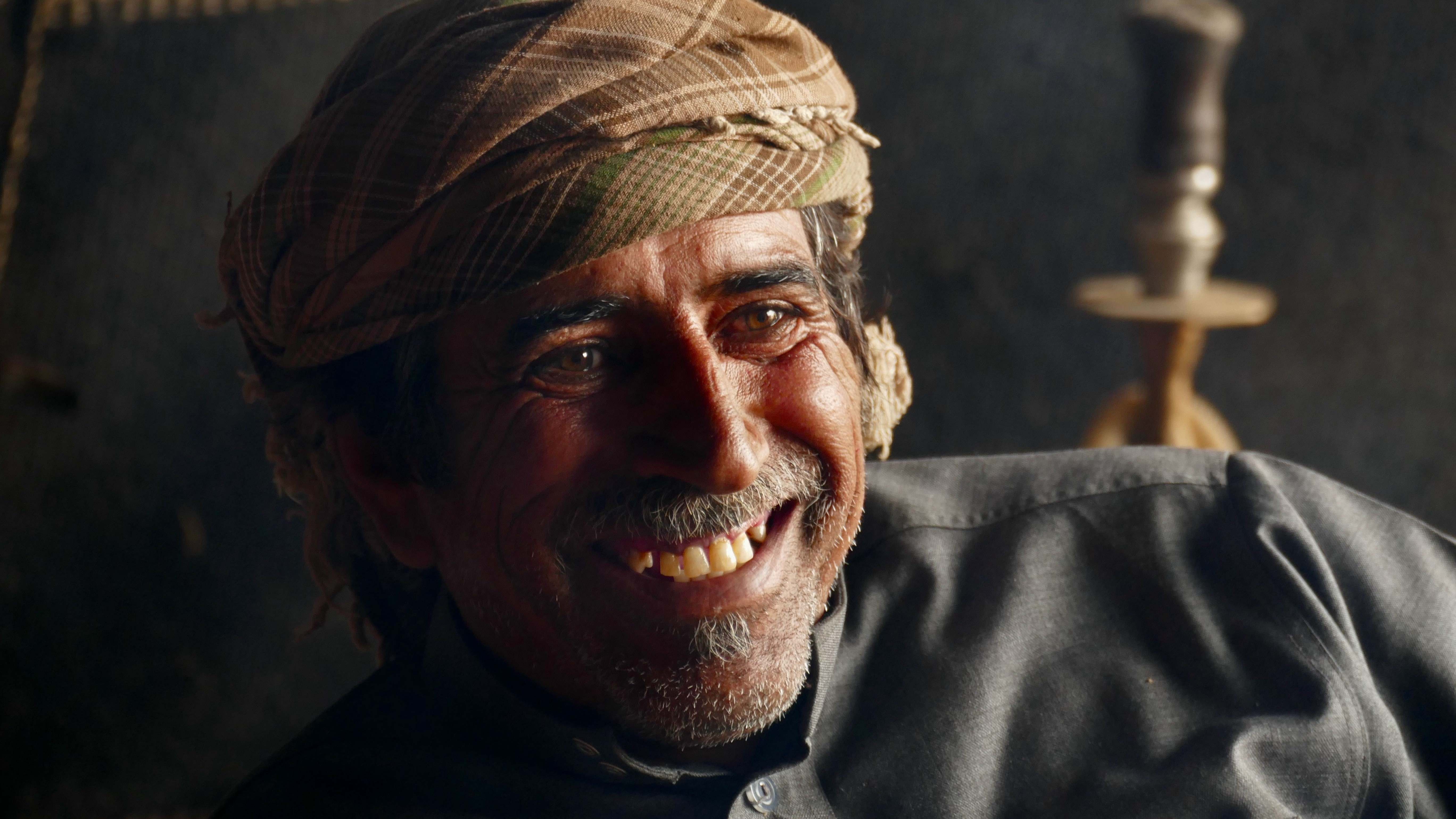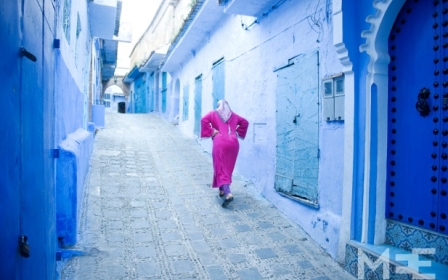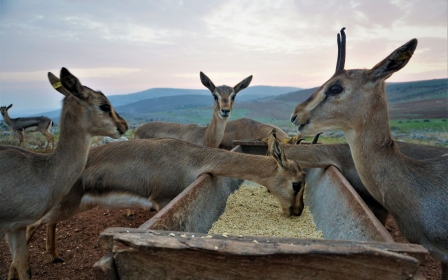'Every part has its own story': Jordan's Wadi Rum Trail opens up old Bedouin hiking routes
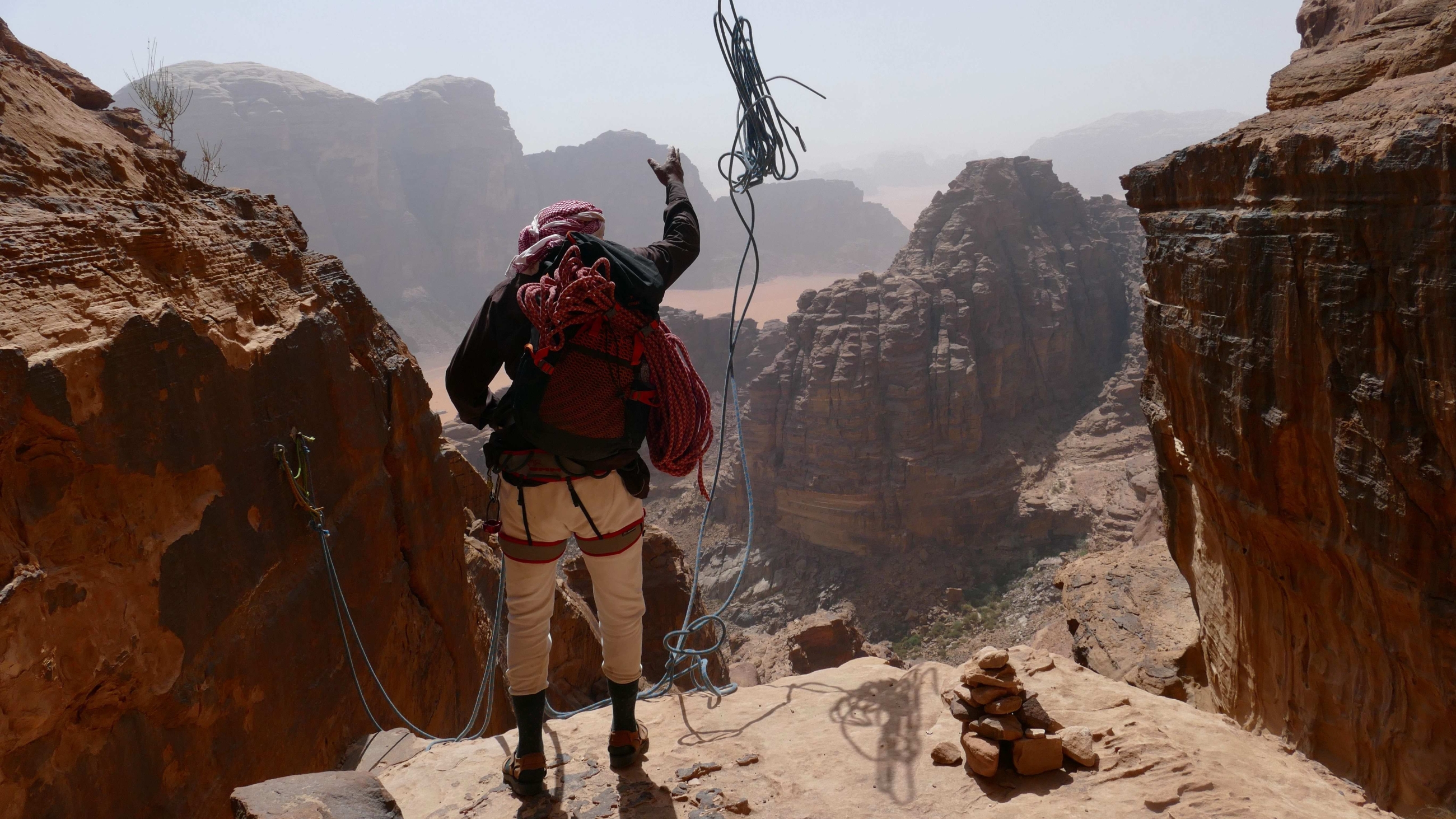
Jordan’s southern border is a land of sweeping valleys, sandstone hills and imposing mountains crowned by peaks overlooking vast, remote deserts.
Not so long ago, much of this region was actually Saudi Arabia. But in 1965 it became part of Jordan, following a border agreement whereby the latter gained 18km to the south, and with it, a stretch of coastline along the Gulf of Aqaba and the desert hamlet of Titin.
The new border design was alien to the tribes who had traditionally demarcated the area, and traced an international boundary in a region where Bedouins had once moved freely.
That realignment also meant that Jebel Um Adami, which until then had been a minor summit in Saudi Arabia, became, overnight, the tallest mountain in Jordan (1,854m), surpassing neighbouring Jebel Rum (1,734m).
Now, this unique region of stunning landscapes steeped in history can be explored as part of the recently launched Wadi Rum Trail, Jordan’s newest long-distance hiking route.
New MEE newsletter: Jerusalem Dispatch
Sign up to get the latest insights and analysis on Israel-Palestine, alongside Turkey Unpacked and other MEE newsletters
“The Wadi Rum Trail is a new thing for the area, and it’s different because it is not like other regular tours with a Jeep; it hides from this and goes into the mountains and the valleys,” Sabbah Eid, a Bedouin elder and a founder of the trail, told Middle East Eye.
The route, formally inaugurated last February, connects along a 120km-long network of ancient shepherd, hunting, trade and travel routes, sections of the Hajj path to Mecca, old caravan roads, and some of the earliest climbing lines.
“The trail aligns with parts of the old pilgrim route between Damascus and Mecca as it runs through Wadi Rum," said Ben Hoffler, a founder of the trail who has been involved in the development of long-distance routes in Egypt. "It aligns with old caravan routes that went between the higher deserts of Jordan and Palestine to the deeper desert of Saudi Arabia; it aligns with old Bedouin migration routes, with shepherd routes.
“Every part has its own story,” he added.
'World-famous sandstone'
The trail can be walked in about 10 days and is the result of more than three years of collaborative work between Bedouin families from Wadi Rum, who have led the project, and a small group of volunteers from other parts of the world.
The route runs through the world-famous sandstone heartland of Wadi Rum and the more remote areas in the hinterlands, crossing vast plains and tablelands, narrow canyons, gorges and towering peaks.
In total, the trail covers an area of about 450 square kilometres and has been divided into six regions, to make it easier to get a sense of the geography and to plan itineraries.
One such region is centred around Jebel Rum, the mountain that until the 1960s held the honour of being the highest peak in Jordan, and is still regarded as one of the most legendary in the region, with perennial springs, stretches of wild plants and herds of ibex.
Another section of the trail runs into one of the largest and most famous mountain ranges in the Middle East, the Hejaz, which stretches along the Red Sea coast from Aqaba to Yemen and in whose heartland, where Mecca and Medina lie, the history of Islam began.
To walk into the Hejaz is to walk into the historical homeland of Bedouin tribes that, over the centuries, have moved and settled as far afield as North Africa, Egypt and the Levant.
“Almost all of the tribes trace their roots to this mountain range of the Hejaz. So it’s spectacular from a natural point of view, and it’s also very meaningful from a cultural point of view,” Hoffler told Middle East Eye.
Climbing heritage
The Wadi Rum Trail is the first long-distance hiking trail in the Middle East to integrate into its main route a section that includes real rock climbing - although there are alternative routes for those who prefer to bypass that.
These sections tell of a long tradition of climbing among the Bedouins of the region, who would ascend mountains barefoot and often alone in search of the best areas to hunt, find water, hide, and collect plants to feed their animals.
“[Before], if you were not climbing, you would not have a good life,” Eid said. “You go into history when you go there.”
In fact, climbing routes are believed to have existed on almost all of Wadi Rum’s major massifs in the past. But many have since been forgotten, and vanished.
“The trail integrates those old Bedouin climbing routes into its path, making it technically more difficult than any other trail in the region, but also bringing up a very rich and little-known part of the region’s culture,” Hoffler said.
In recent decades, modern and more technical climbing lines have also been developed in Wadi Rum. Yet the Wadi Rum Trail integrates ancient Bedouin routes instead, as a way of reclaiming its ancient and rich climbing heritage.
“It’s quite an extraordinary piece of the history of movement within this region, and that’s what the Wadi Rum Trail is trying to underline,” Hoffler noted.
Slow tourism
The developers of the new trail acknowledge that tourism in Wadi Rum is now a thriving industry that brings hundreds of thousands of visitors a year and large economic benefits.
But they note that this boom is also bringing changes to the landscape and aspects of community life that are not always for the better.
For many tourists and groups visiting Jordan in just a few days, the Wadi Rum experience is usually limited to fast-paced, compressed programmes that can fit their busy schedules.
The Wadi Rum Trail aims to promote a different kind of community-based tourism, reviving slower, more traditional ways of moving that help to preserve the natural environment and raise greater awareness about the ancient local heritage.
“The kind of tourism that comes to predominate the region is based around 4x4 tours and nights in the desert that are usually spent in purpose-built camps styled as authentic Bedouin experiences, but which have usually involved a very stylised representation of Bedouin culture,” Hoffler said.
“The Wadi Rum Trail was built in the belief that tourism can go deeper into the region and its landscapes, and it can also give space that is more spontaneous and authentic for real relations to develop between visitors and people from the region,” he added.
The Wadi Rum Trail also wants to contribute to the preservation and re-evaluation of local knowledge and skills. Today, Bedouin identity remains strong, but fewer young people know the land’s paths, water sources and local flora and fauna, as well as the names, stories and legends of the region - largely because, for many, it may no longer be necessary to know.
'When I go from one part of the region - for example the Red Sea mountains of Egypt - through Wadi Rum it seems like one Bedouin nation'
- Ben Hoffler, co-founder of the Wadi Rum Trail
“When we take the tourists in the 4x4 cars, we never contact with them like when we do the hike, because when we start the hike we can share our stories and explain our culture to them,” Rakan el Zalabia, a climbing guide who helped to develop the route over Jebel Rum, told MEE.
“This is [a gift] for the people. They can find beauty in the mountains, where they have the peace and silence, [but also] more time with the Bedouins,” Eid added.
The Wadi Rum Trail has been developed as a route to be guided by Bedouins of the region, and includes remote and little-known desert areas that would otherwise be difficult to walk without local help.
Wadi Rum is home to several Bedouin families of the Anaza, Bani Atiya, Billi, Howaytat and Tarabin tribes.
“When [Bedouins] preserve their culture and don’t just use it like a commodification, this helps to [develop] sustainable tourism,” Ismaiel Abuamoud, a professor at the faculty of archaeology and tourism at the University of Jordan, told MEE.
Abuamoud has studied the positive impact of ecotourism in the Wadi Rum region. “When they get aware of the importance of working together, when they use their resources, when they get aware of the fauna and flora, this helps to [build] sustainable tourism,” he added.
The Wadi Rum Trail is also a sister project to two other long-distance trails in the region: the 550km Sinai Trail and the 170km Red Sea Mountain Trail, both in Egypt.
“The thing I find so interesting about it is not just how diverse the landscapes are between these places where we’ve made the trails, but how consistent the culture is,” Hoffler noted.
“When I go from one part of the region - for example the Red Sea mountains of Egypt - through Wadi Rum it seems like one common Bedouin nation.
'We worked all together, and this is for the new generation to continue. It is a present for our children'
- Sabbah Eid, Bedouin elder
“It’s fascinating [how] a lot of connections exist across this tribal world.”
In addition to the help of guides, and depending on the number of days spent walking, hikers will also need help carrying everything required for the journey, which mostly crosses through the wilderness: from tents to food and water.
This can sometimes be done by 4x4, but hikers are advised to rely on the help of camels instead, as they have also been a key companion of the Bedouins and have made their mobile way of life possible for hundreds of years.
“We are trying to open a space where tourism can be done differently, and where it can help conserve the things that bring people to this region in the first place,” Hoffler said.
The trail is not owned by anyone and has been created as a community project for the region. The Wadi Rum Trail Organisation (WRTO) has been formed as a voluntary group to oversee its development, manage the trail, produce public resources, and raise awareness of this new type of tourism in Wadi Rum.
“We worked all together, and this is for the new generation to continue,” Eid said. “It is a present for our children.”
This article is available in French on Middle East Eye French edition.
Middle East Eye delivers independent and unrivalled coverage and analysis of the Middle East, North Africa and beyond. To learn more about republishing this content and the associated fees, please fill out this form. More about MEE can be found here.


